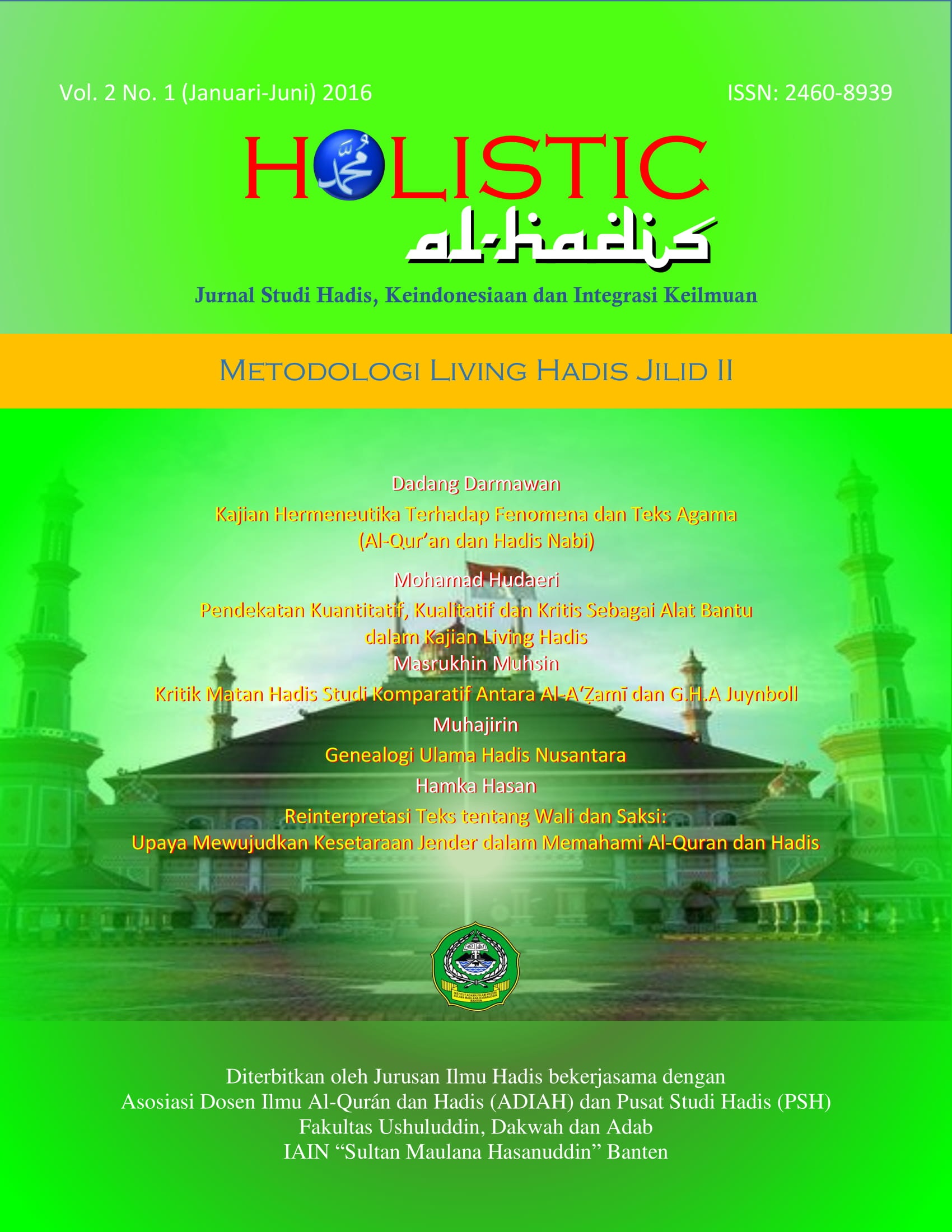KEDUDUKAN SANAD (TRANSMISI HADIS NABI SAW) MENURUT PARA ULAMA KLASIK
DOI:
https://doi.org/10.32678/holistic.v1i1.913Keywords:
kritik sanad, Sanad, isnâdAbstract
One of the unique aspects in traditional Islamic scholarship is the using of isnâd system to report every saying from the author, particularly the prophetic hadîth. The so-strict attribution of isnâd to hadîth makes the sanad (p. asnâd; the chains of transmission) can not be detheched from the hadîth itself. Sanad is an element of hadîth in addition to râwî (collector) and matn (text of the hadîth). In further, sanad is regarded to as the source of the religion. This is because hadîth, from which Islamic doctrins are to be extracted, was transmitted by the authorities in the sanad. It is for this reason that the chains of transmission are of great attentions in the inqu ry of the authenticity of any hadîth. In exemining a hadîth from this aspect, as this article tries to elaborate, traditional Muslim specialists focused on three concerns: the continous connectivity of the chains of transmitter (itiṣâl al-sanad), the credibility of all transmitters (‘adâlah al-ruwât), and their intellectual capacity (ḍabṭ al-ruwât).
Downloads
Downloads
Published
Issue
Section
License
Authors who publish with this journal agree to the following terms:
-
Authors retain copyright and grant the journal right of first publication with the work simultaneously licensed under a Creative Commons Attribution License that allows others to share the work with an acknowledgement of the work's authorship and initial publication in this journal.
-
Authors are able to enter into separate, additional contractual arrangements for the non-exclusive distribution of the journal's published version of the work (e.g., post it to an institutional repository or publish it in a book), with an acknowledgement of its initial publication in this journal.
-
Authors are permitted and encouraged to post their work online (e.g., in institutional repositories or on their website) prior to and during the submission process, as it can lead to productive exchanges, as well as earlier and greater citation of published work (See The Effect of Open Access).


















